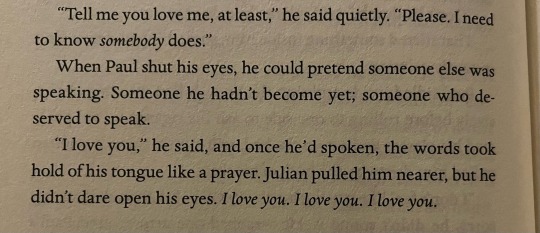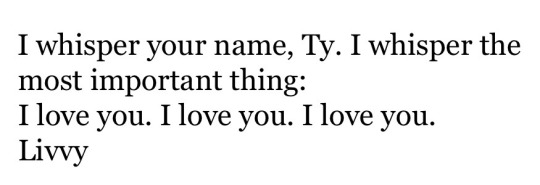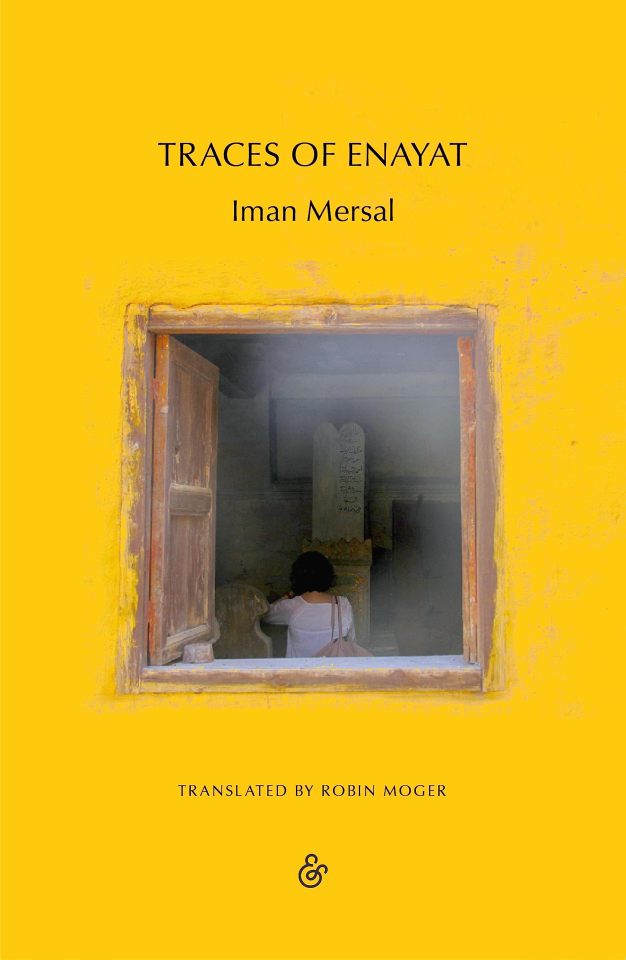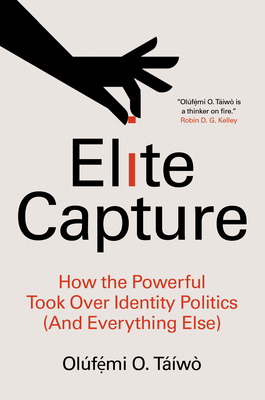#Academic Capture
Explore tagged Tumblr posts
Text






i love you i love you i love you
these violent delights - micah nemerever / songbird - fleetwood mac / queen of air and darkness - cassandra clare / pink in the night - mitski / this is how you lose the time war - amal el-mohtar & max gladstone / i capture the castle - dodie smith
#mine#web weaving#these violent delights#datvd#songbird#i capture the castle#fleetwood mac#queen of air and darkness#shadowhunters#the shadowhunter chronicles#this is how you lose the time war#pink in the night#mitski#dark academia#light academia#dark academic#soft academia#academia#books#words words words
895 notes
·
View notes
Text









tagged by @shrips for 9 books you'd like to read in the new year! ty for the tag-- i tag @halfagod @albatrossisland @eponine119 @tru-lyly
#some of these i've started (ie the last book is from the library and i've tried doing the exercises digitally)#i've wanted to try learning how to paint rather than just doing flats but it is sooo time consuming man#also a lot of these is literary / academic / jargony but i guarantee you i will read like#only one of them#i'm a little through elite capture and it's interesting but i'm like maaaan this is a little too much like coursework rn#so realistically i will read smoke / martyr / hopefully oil / maybe enayat or burn#kala and my mother laughs i am hoping to get to bc i forget who recced it to me here but i will try.#also for whoever tagged me before for other ask games but i never got to it im sorry ill get better at it next year again#truthfully i think it is bc i am irl more now lmao tag games used to be my no 1 priority#or im sick and am like im not typing shit rn#im sick rn#i really need to get off escitalopram man the Sicknesses are only getting sicker#also shrips if ur somehow still reading all this dont worry abt ur stuff being not literary its p good tbh i feel like#against a pretentious person's judgement#(NOT ME I THINK. BUT THERE R TITLES THT R CLASSICS THERE AND THE PRENTENTIOUS PPL R USUALLY OK W THOSE)
25 notes
·
View notes
Text
this african history & archaeology before colonialism class is opening my eyes so much to aspects of the continents history that i was ignorant about and i'm really falling in love with africanist historiography in general it is so refreshingly materialist and at least in my experience so far there is no beating around the bush or excuses made on the topic of european colonialism, introduction of capitalism, slavery in its many forms across the continents history, the ways in which antiblackness has been gendered throughout history, etc. and for me in particular as an asian there is something about studying the indian ocean trade region in which africans and asians have been in near-constant contact for thousands of years with very little european involvement until later years, an entire maritime world in which we migrated and traded and married and warred and talked between regions as distant as east africa and china for sooooo long and with such complexity and it all had almost nothing to do with europeans. knowing there were bantu speaking africans in ancient china commanding armies and chinese and indian traders as far as madagascar sharing meals with local merchants and learning each other's languages. there was still violence of course - antiblackness even during these times existed, albeit in a different manifestation from the last 500 years of european racism, not to mention misogyny and class violence - but there is something about knowing an entire "world" existed that was shared between our peoples and generally speaking on a much more even 'playing ground' in which all parties must be mutually negotiated with, and coexistence between us... the rich stories and lives lived, and the lessons that entire region can tell us if we only pay attention...
156 notes
·
View notes
Text


Lalla Ward makes a brief appearance as Lady Augusta, intended bride to an ill-fated aristocrat, in A Ghost Story for Christmas: The Ash Tree (BBC, 1975)
#fave spotting#lalla ward#doctor who#a ghost story for christmas#the ash tree#1975#romana#romana ii#spoilers for the ash tree ig????#i mean it's pretty obvious from the outset that Ed Petherbridge's aristo is not in for a good time#i mean he's a Jamesian protagonist for one thing....#lalla had been acting since the beginning of the decade‚ with a fair number of one off appearances on tv and the odd film to her name#(most notably Hammer's Vampire Circus). she was still a few years off DW and genre immortality at this point#it isn't the most rewarding role; James (who i don't think many would argue that he wasn't a bit of a chauvinist) rarely featured#significant women characters in his work (a large number of them being academical in setting didn't help). actually the ash tree#is something of an outlier in that regard‚ as it does feature a significant female character in Mrs. Mothersole‚ but we can hardly consider#her a positive feminine presence... actually one of Lawrence Gordon Clark's regrets about this particular entry in the Ghost Story for#Christmas canon is the failure of him and writer David Rudkin to make a true villain of Mothersile; Clark felt that their shared sympathies#for the historical victims of witchhunting prevented them from capturing the 'evil' of the character (tho it's debatable how much James#himself intended her to be truly evil; this is just Clark's opinion after all‚ and fwiw i think Rudkin's greater complexity of the#character is more interesting‚ more believable and more appropriate)#i rambled. anyway yes‚ not a meaty role perhaps‚ but Lalla sinks her teeth in all the same and in just a few brief scenes successfully#creates a vivid and fully realised character‚ a charming and flirtatious fiancée with something of a rebellious streak#no ash tree post bc i made one the last time i watched it a couple of years ago
93 notes
·
View notes
Text

Pond by Claire Louise-Bennett
#this reminds me of my friend Florence#why do my literary and academic interest all come back to love#it’s so kitch but these are the things I’m interested in: love and desire#this moment captured this well#but further accentuated my own cringe-ness in underlining this quote#pond#claire louise bennett#fitzcarraldo
40 notes
·
View notes
Text
people really do not know what they're talking about when it comes to Elizabeth Woodville's social status, huh?
#yes Elizabeth was without a doubt considered too low-born to be queen#no she was not a commoner and nobody actually called her that during her life (so I'm not sure why people are claiming that they did?)#Elizabeth's social status was not a problem in itself; it was a problem in the context of queenship and marrying into royalty#Context is important in this and for literally everything else when it comes to analyzing history. Any discussion is worthless without it.#obviously pop culture-esque articles claiming that she was 'a commoner who captured the king's heart' are wrong; she wasn't#But emphasizing that ACTUALLY she was part of the gentry with a well-born mother and just leaving it at that as some sort of “GOTCHA!”#is equally if not more irresponsible and entirely irrelevant to discussions of the actual time period we're studying.#Elizabeth *was* considered unworthy and unacceptable as queen precisely because of her lower social status#her father and brother had literally been derided as social-climbers by Salisbury Warwick and Edward himself just a few years earlier#the Woodvilles' marriage prospects clearly reflected their status (and 'place') in society: EW herself had first married a knight and all#siblings married within the gentry to people of a similar status. compare that to the prestigious marriages arranged after EW became queen#Elizabeth having a lower social status was not 'created' by propaganda against her; it fueled and shaped propaganda against her#that's a huge huge difference; it's irresponsible and silly to conflate the two as I've seen a recent tumblr post cavalierly do#like I said she was considered too low-born to be queen long before any of the propaganda Warwick Clarence or Richard put out against her#and the fact that Elizabeth was targeted on the basis of her social status was in itself novel and unprecedented#no queen before her was ever targeted in such a manner; Clearly Elizabeth was considered notably 'different' in that regard#(and was quite literally framed as the enemy and destroyer of 'the old royal blood of this realm' and all its actual 'inheritors' like..)#ngl this sort of discussion always leaves a bad taste in my mouth#because it's not like England and France (et all) are at war or consider each other mortal enemies in the 21st century#both are in fact western european imperialistic nations who've been nothing but a blight to the rest of the world including my own country#yet academic historians clearly have no problem contextualizing the xenophobia that medieval foreign queens faced as products of their time#and sympathizing with them accordingly (Eleanor of Provence; Joan of Navarre; Margaret of Anjou; etc)(at least by their own historians)#Nor were foreign queens the “worst” targets of xenophobia: that was their attendants or in times of war commoners or soldiers#who actually had to bear the brunt of English aggression#queens were ultimately protected and guaranteed at least a veneer of dignity and respect because of their royal status#yet once again historians and people have no problem contextualizing and understanding their difficulties regardless of all this#so what is the problem with contextualizing the classism *Elizabeth* faced and understanding *her* difficulties?#why is the prejudice against her constantly diminished & downplayed? (Ive never even seen any historian directly refer to it as 'classism')#after all it was *Elizabeth* who was more vulnerable than any queen before her due to her lack of powerful foreign or national support#and Elizabeth who faced a form of propaganda distinctly unprecedented for queens. it SHOULD be emphasized more.
26 notes
·
View notes
Text
A lot of people in Dragon Age: ooooh necromancers are so scary and all probably evil... They're just waiting for the right weather to depose the king of Nevarra, those sinister freaks, surely they will destroy us all.
This flavor text I found in the necropolis:

#it's incredible how well they captured the spirit of the kind of shit academics fight over#i want to read those notes so so badly#necro plays dragon age
6 notes
·
View notes
Text

You've seen 'my-county-or-region' Miku...now get ready for hyperspecific 'my-trip-to-hamburg' Miku!
Featuring:
- cute outfit I bought in Hamburg
- adorable moth earrings I bought at a cute little art shop
- probably the Best oat milk coffee I ever had from a cozy book Café (in a very pretty cup)
- random headband I bought at dm because the wind was cold
Aaanndd my first time trying malatang!
#ok I know this is so niche no one probably cares about this#this idea came to me as a vision in my academic writing course#it's just my way of capturing things I liked about my trip to Hamburg#best thing was seeing my friends tho#hatsune miku#never thought I would use that tag wow#country Miku?#does this still count for the trend?#art#drawing#artist on tumblr
2 notes
·
View notes
Text
People will praise and support the most mediocre things yet severely undervalue or straight up ignore hard work and talent. Art, fanart, music, writing, scientific papers... take your pick.
And to be clear, I'm not talking about poor anatomy art, it can be poor anatomy yet still show talent, taste, intelligent composition, great color palette, thoughtful work, it could not involve anatomy at all. I've seen amazing kids and amateur art. But since I'm at it, maybe not every drop of pencil/brush on paper -traditional or digital- must be shared or praised like it's the next Mona Lisa, especially if you're gonna ignore a more skilled and hard work.
#ivy shitpost#i swear the world is upside down#they see the most deformed bullshit and go wow u captured well their eyes - which are gounging out btw#but ignore a more well done work#are u fuking blind???#academic papers?? rushed bullshit gpt vomit good. years worth of hard work? not so well#maybe ai vomit is the only thing you people deserve after all
3 notes
·
View notes
Text
TRAGIC: reading the starless sea and i go into the tumblr tag to see what other people think and it is all dark academia people
#i hate d ark academ ia. what even is it (rhetorical) (i don't actually care)#its a good book though i really like it. Stories about cycles mmmmm yummy. eats it#i started it a few months ago and didn't super far. it wasn't capturing me#but like. 35% or 40% into the book or so it was like a switch flipped and. EATS IT#quincy.txt
2 notes
·
View notes
Text
THIS WAS VNVKDDKKFGJJSLFO😩😩😩😩🥰🥰🥰🥰💕💕💕💕🥺🥺🥺🥺

A Shoulder To Lean On
word count: 1438 || avg. reading time: 6 mins.
pairing: university AU!Kita x chubby!Reader
genre: fluff
warning: mentions of academic pressure
request: Hi hi Sunny hope you're enjoying this last bit of the year! May I have breakfast with Kita sharing a 23 so we can study? Thank youu || fluffy, dealing with exam stress with crush Kita


You felt like you hadn’t slept properly in weeks but there was nothing to be done about it. You sighed when you hit sent on the assignment, well aware that you hadn’t even been close to the page count requirement but it was better to hand in something than nothing at all.
Rubbing your eyes you yawned and looked around at your roommate mumbling in her sleep.
It was almost midnight, way past your preferred bedtime. Your stomach growled, reminding you that the last thing you ate was a quick vending machine sandwich for lunch.
Opening the second drawer of your nightstand you found there wasn’t anything in the snack stash you were particularly tempted by. Usually, whenever you went to the grocery store lately you beelined to the prepared food section because all the exams and papers left you little to no time for such banal things as eating or sleeping.
The heavy snowfall from earlier had calmed significantly and only a few tiny flakes were carefully descending past your window.
After another moment’s thought, you got up and grabbed your jacket on the way out.
The streets surrounding the campus were quiet, with only a few people on their way home. But the closer you got to the main road and thus closer to restaurants and bars, supermarkets and convenience stores the busier the air became.
Laughter and music came from the brightly lit establishments with their Christmas-themed window displays. You could hear people cheering and toasting and singing as you walked past and tried to figure out what you were in the mood for. Not feeling like anything too elaborate or heavy your feet carried you to a convenience store, landing on a simple day-old onigiri and a cup of fruit to eat on your favorite bench by the library, hoping the icy fresh air would soothe the steady pounding in your temple soon.
You walked slowly, too tired and lost in thought to gather any energy.
The onigiri, while a tad dry, was delicious and the hot Christmas tea, purchased on impulse at the register, had you close your eyes in bliss. To no one’s surprise, the bench in question was empty. As you spaced out staring at the ground, you heard steady footsteps approaching from the warm glow of the library entrance.
Kita had recognized your soft shape instantly. Like most of the time you had been fresh on his mind, wondering if you took care of yourself, were skipping any meals, were maybe thinking about him, too, or smiling at someone else. Even though he would love nothing more than to ask you out to dinner, he respected that you didn’t want to date anyone for a while - a wish he had accidentally overheard while you were ahead of him in line at the cafeteria. And so he settled for being your friend; for now.
“Y/n?”
You looked up and watched him brush back the hood of his jacket, smiling gently.
“Oh hi.”
You gave a small bow and scooted a little to the side to make space for him. He sat down, making note of your drooping eyes.
“What are ya up to so late? If ya were in there, I didn’t see ya, I’m sorry.” He nodded towards the big imposing building that you hadn’t set foot in for weeks, too intimidated by all the students writing and reading and researching and having their life together.
Instead of answering you yawned and took a sleepy sip of tea.
“Did you finish all your assignments?”, you asked, your words slightly mumbled.
“Uhm, yeah.”, he said, a bit confused, and frowned even more when he saw you swaying a little forward.
Kita was afraid you would fall off the bench and thought frantically, his hand already raised.
Friends did this. He saw it all the time. It was no big deal.
And he carefully guided your lulling head to his shoulder.
His hand shook slightly, torn between patting your hair or retreating again to rest on his knees.
But that would look even more awkward, right? Friends could pat each other’s heads. He’d seen it in movies and TV shows.
For a moment his fingers hovered over you, then he set them on your hair.
No, this was too intimate.
He quickly moved to your shoulder, hoping you hadn’t noticed anything.
You sat like this for a little while, with him somewhere between tense panic and absolute calm, trying not to breathe too deeply or too much to not disturb you and to not lose track of his thoughts. Your steady breath formed little clouds in front of you.
“Ya should really get to bed.”, he said quietly, hating that he was right. He’d never been this close to you and found himself taking slightly deeper breaths when he got a whiff of your shampoo.
“Hm.”, you hummed, then sat back up, yawning again.
“I’ll walk ya.”
Neither of you was in a hurry as you slowly trudged through the soft layer of snow toward your dorm. After throwing out the wrappers and cup from your late dinner you felt a little better and Kita’s presence put you at ease. On a little wall along the pathway, you spotted a small group of tiny snowmen and jogged the few steps to examine them closer. “One second.”, you said to Kita when you grabbed a handful of snow and began forming your own. But instead of patiently waiting as you had expected him to, he leaned down as well to make a first ball. You smiled at him and for the next two minutes, you silently worked side by side to add to the local snowman population. You stepped back to take a look at your handiwork, Kita even took out his phone to take a picture of the two new members on the wall.
You sighed happily and were glad the cold gave you an excuse to have tears welling in your eyes.
“This is the first time I’ve done something for fun in weeks. I forgot what it was like to do something not for uni.”
Kita didn’t say anything, he just waited for you to continue.
“Academia is cool and all but dang, at what cost, you know? It snowed so much this winter already and I was dying to go outside and play but no, exams and more exams and studying, and oh- would you know it? More exams. And I love Christmas. But because of all this studying, I haven’t even had time to bake the sugar cookies my mom usually makes.” At this point you were just rambling, you couldn’t even see Kita next to you anymore and thought he had probably gone to gather more snow for a second snowman just so he didn’t have to listen to you. You yelped in surprise when something hit you in the back, well cushioned by your puffy jacket. When you turned around, you saw Kita lop another snowball in your direction, a small smile on his lips.
“Ya think, ya can take me?”
His heart leapt when your eyes brightened and you bent down to get your own ammunition. The careful game quickly escalated into an all-out war and you two ran around the white lawn near your dorm, laughing and calling out smack talk - yours quite a lot better than his - until you collapsed out of breath onto a small mountain of snow, moving your arms and legs up and down for a poor excuse of a snow angel on the trampled canvas. Kita appeared in your field of vision, beaming and holding his last snowball aloft.
You gasped. “You wouldn’t dare.”
“Wouldn’t I?”, he grinned with a mischievousness you’d rarely seen before.
In one swift motion, you shot up and grabbed the front of his jacket to pull him down with you, now looming over him with a handful of snow.
“Surrender!”
“Ye ye! I give up.” He actually giggled and you laid back again, satisfied with your win.
Even through the lights on campus, you could make out a few stars in the jet-black sky.
“Y/n.”, he said after a moment.
“Hm.”
“I know ya don’t feel like datin’ and I’m sorry to even bring it up but… would ya consider goin’ out with me sometime?”
Your head snapped to the side to look at him, trying to find any indication that he was joking.
“Are you serious?”
“Pretty serious, yea.”
You beamed and, pursing your lips to stop yourself from cheering, you looked back up to the stars, replying quietly, “I’d love to.”

a/n: request for @natdu
Any time I get to write for this man I can’t not make it as soft as possible. He is so fskfjsianahak, ya know? You get it. Thank you so much for this request, I hope you enjoyed it! 🌟
#jelly's library ☁︎༄。゚゚・。・゚゚。 ゚#sunnys university#kita x chubby reader#haikyuu x chubby reader#haikyuu fluff#haikyuu x reader#kita shinsuke x reader#shinsuke kita x reader#x chubby reader#OMG OMGGGGG#TOOTH ROTTING SWEETNESS#omg you captured the academic stress so well#like REALLY well i had war flashbacks 😩😩😩#he settled for being friends bc of what he overheard you say at lunch 🥺🥺🥺🥺#A MANNNN#the snowball fight 😭#“you wouldnt dare” “#“wouldn't i?”#SCREECHING AND HOLLERING#i really need them to end up together....#omg i would die for these two#SO SOOOO SWEEET#this was EVERYTHING#no fluffier than this#MORE SOFT THAN THE PILLOWS AT IKEA
167 notes
·
View notes
Text
By: Peter Boghossian
Published: Dec 30, 2024
Academia is a fraud factory. Last year, 10,000 research papers were retracted—and those are just the ones that got caught. Entire lines of literature are fabricated out of whole cloth. Plagiarism is rampant. Universities are protecting and hiding fraud—they’re keeping serial plagiarists on the payroll. They don’t even fire Pretendians (people pretending to be Native Americans who hold positions of authority), despite their lip service, land acknowledgments, and ostensible deference to Native Americans’ lived experiences.
A curious person might wonder: Why? How could this happen? Why would anyone hide corruption or deny it or look the other way—especially when it undermines the legitimacy of their disciplines and the academy itself?
There are plenty of reasons. Here are a few:
Ideology. Many academics don’t see research as a way to discover facts about an objectively knowable world. Instead, they view research as a tool to create the world they want—a world that’s just, fair, equitable, and free of oppression. Their goal isn’t to uncover the truth; it’s to craft a narrative that aligns with their vision of justice. To make this happen, they describe how they think things should be and cherry-pick methods to support those conclusions (Action Research).
When this mindset takes over, research goals shift. It’s no longer about trying to falsify claims; research is about verifying narratives to fit preexisting beliefs of how the world should operate.

[ Claudine Gay, Former President of Harvard University and current Wilbur A. Cowett Professor of Government and of African and African-American Studies ]
Career Advancement. Not all fraud is ideological—sometimes it’s just about climbing the ladder. This kind of corruption is especially common in the soft and hard sciences, where data fabrication boosts publication records, improves reputations, and increases grant money. Academic fraud, by its nature, is difficult to discover. If I had to guess, I’d estimate that around 15% of papers are flat-out fraudulent (data fabrication), and another 25% are less obvious but still bogus (e.g., p-hacking). Although these estimates could be low given the replication crises in various fields.
Midwits. This isn’t merely ignorance—it’s midwittery. Many academics are not particularly intelligent; they are, at best, middling intellects. We think of academia as a haven for brilliant minds, but it’s full of people with average intelligence inflated by credentials. Midwits cluster heavily in the humanities and thin out in the hard sciences. They are not capable of understanding complex problems (like why falsification matters more than affirmation) because they lack intellectual horsepower.

Moral Echo Chambers. Academia is a giant moral echo chamber. For all the talk about the indispensable importance of diversity, the academy is dominated by identitarian leftists. For them, morally unfashionable conclusions aren’t just wrong—they’re heretical. Disagree and you’re not merely mistaken—you are evil.

Entire areas of inquiry are off-limits because some academics think they shouldn’t be studied. And yet, these same people insist their claims are true. How do they know? They don’t. They can’t. But questioning them makes you the bad guy.
Reputation Preservation. Fraud doesn’t just undermine individual academics—it threatens entire institutions. If the public knew how widespread the rot really is, the entire system would likely collapse. So, they protect their own. Whistleblowers are silenced. Critics are dismissed. And the fraud? It never ceases.
The rot in academia is not an accident. It is the inevitable outcome of a system built on groupthink, careerism, and warped moral compasses. The academy once claimed to be a bastion of free thought and inquiry, but it has become a fortress of conformity, where the truth takes a backseat to narratives, prestige, and power. Until fraud is met with consequences and intellectual diversity is embraced, academia will remain what it has become: A factory of lies, wrapped in the illusion of legitimacy, and churning out the very propaganda it pretends to oppose.
#Peter Boghossian#academia#higher education#academic fraud#academic corruption#ideological capture#ideological corruption#corruption of education#fraud#plagiarism#defund Gender Studies#humanities#academic propaganda#religion is a mental illness
7 notes
·
View notes
Text

| MomI'mSafe {detail} - Amay Kataria (2020) | South Asia Institute, Chicago, IL
#when i went to the South Asia Institute this display captured me for a good twenty minutes and i kept reading all the messages#i see you i hear you i know you#i was moved after witnessing this work and it made me deeply emotional#the whole institute was moving; i wept through a lot of it#but especially this one#it just felt so human#if you get the chance to witness it in person please do. it's like 8ft or more irl with an interactive component#i wrote an academic paper on this display for grad program this past summer term and I'm still thinking about how it affects me
0 notes
Text
I think you're right that it's significant, and I think Mori is clever to recognize that Akutagawa is a rook.
Like a rook, Akutagawa is powerful, but generally contained and often undercut by his predictability. However, because he's keenly aware of his own constraints, and because others often aren't (especially regarding variables they've internalized as known), he's able to play into and against his own predictability to paradoxically surprise them.
He moves within the confines of his rigidity to shape outcomes, sometimes more effectively than his more dynamic opponents and peers. Rooks do that too, if you let them.

Me, knowing nothing about chess, probably overthinking the significance of referencing akutagawa in this scene, but is going to look it up later anyways
#i have very specific chess feelings and thoughts re: rooks (which is what that piece is)#because in elementary school i was in a program for intellectually gifted students - by which i do NOT mean an honors program#i mean i displayed several specific neuro characteristics and struggled in a classroom environment such that i was referred for screening#the results of the screening flagged me for several additional tests and my results on those tests then prompted a comprehensive assessment#which was conducted by a licensed examiner who additionally administered another test chosen specifically based on my prior data#the report from which triggered a review of all of the above data by a panel of specialists who determined that I was wired so atypically#that I required specifically designed support services to avoid an adverse impact my access to education#ie I was not considered academically gifted which is what people are usually thinking of when they talk about giftedness (esp on tumblr)#i prefaced with all of that to counter misconceptions and emphasize that i was not in a program for smart and highly successful students#i was in a program for students with distinct cognitive processing needs that could not be met without specialized intervention#but inanely and entirely b/c of misconceptions the administrators at my school forcibly registered us in an annual chess tournament#which they wouldn't let us opt out of b/c there was a funding incentive for the school if we advanced far enough#ironically chess is a bad fit for this type of giftedness b/c it's rote + relies on bounded conventions instead of creative problem solving#but anyway i did not want to fucking play chess especially not competitively - it's boring and gets redundant#so i intentionally threw all of my games to remove myself from the tournament early#except my fellow indentured chess competitors noticed i was doing that and they were also bored and didn't care for the tournament#and so several of them made a game out of forcibly advancing me as far as they could by outmaneuvering my attempts to lose#horrifically they managed to corner me into winning enough that i was in serious danger of advancing#and so i started AGGRESSIVELY practicing chess in my spare time to learn how to shape the board and get confident in my ability to do so#i played against computers and then strangers online for hours a day and i studied checkmate patterns and how to subvert + reconfigure them#all so i could play well enough to ensure i'd lose even when being actively sabotaged#it worked - i narrowly escaped advancing that year and I don't think they were able to lose to me again after that#they kept trying - even playing me outside of tournaments to try and figure out how i was consistently losing#it's b/c i layered multiple strategies that involved breaking select conventions + manipulating their focus and psychology#BUT the fulcrum of my approach relied heavily on my rooks and select pawns as my most valuable pieces#i got very good at using rooks to shape the board without placing them in a position to be captured until i wanted them to be#once i had a few pawns close to promotion i would shift my rooks into bait b/c once one was taken i could just promote a pawn into a rook#and because absent a potential stalemate people almost always promote pawns into queens#my opponent would forget my additional rooks and would make choices based on the implicit assumptions that my deputized pawns were queens#rooks are treasures
126 notes
·
View notes
Text

Briengr is far from being dumb but having been raised by Nords in a backwater village, he had no academic education nor interest in such things, in particular philosophy, whose only conclusion for him was that philosophers were nothing but old men who sat around on their wrinkly asses and questioned everything. However, this belief was quickly dashed when the Khajiit caravan Briengr traveled with showed him the wonders of philosophy and gave him scrolls to study. To this day, Briengr still pours over the scrolls gifted to him, keeping them preserved and often quoting his favorite lines.
#➳ ❪ headcanons ❫ … to all things housed in his silence ❞#he can read and he's not dumb but he's not really academically gifted#to him reading is boring#he doesn't like to just sit around#but every now and then he'll find a book that captures his fancy and give it a read#most of these books are smut btw
1 note
·
View note
Text
This year has, so far, been for me a series of rapid realizations of what I have been unlearning.
I went to the library. This was a couple weeks ago. I knew I needed to read a book, fiction. I hadn't done so in over a year and it was the longest period of time I had ever gone without doing so. I made a rule: I would only pick books I had never heard of, by authors I had never heard of, and I would not do any preliminary research or even bother to look at what the book was about. I would make my decision on whether to read or not purely on my impression of the title, cover and opening lines.
The book was The Connoisseur by Evan S. Connell. It was kind of a random selection. I sat down with it in a corner of the library and straight up devoured it. I tore through the book within a few hours, without taking a single break. I was captivated. I couldn't put it down.
It is a book about a guy who buys a Mayan figurine in a knickknack shop while he's on a business trip. and becomes obsessed with pre-Columbian sculptural art. There isn't really much of a plot apart from this. He goes to sketchy antique shows, has conversations with museum curators, wealthy art dealers and forgers, and seeks to learn how to distinguish a genuine pre-Columbian piece from a fake one. It was written in the 1970's, so the views on Native Americans are antiquated and sometimes offensive, and there is the troubling thread of the very concept of looting another culture's treasures and treating them as collectibles, though the book is not without commentary on this.
All the same, it was a completely intoxicating read. The vicarious experience of becoming fascinated with a topic and having it unfold a whole world for you was ferociously gripping, and so was the intrigue of the art collecting world itself. The frauds, forgeries, smuggling, museums, academics, aristocrats, auctions and seedy flea markets. Will he ever be able to tell if a piece is "real?" Does it matter if it's "real?" Why does he want to own and possess a piece of art, and how does its "realness" affect that desire? The book leaves you not knowing what to think.
It is a book about curiosity, portrayed in the narrative as a totally unreasonable lightning bolt that strikes a man who has never been fascinated by anything and changes him forever. Why? Why does a Mayan figurine, in particular, speak to him? Why does any piece of art, or any fascinating thing in the world, speak to anyone? It is unknowable.
I went to the library again. I picked a new book using the same rules. This book was Fragile Beasts by Tawni O'Dell. Just like the last time, I was totally captivated. I couldn't put it down.
Did I have a couple major problems with the portrayal of some important aspects of the story? Yes. (It would make the post much longer to discuss.) Was I completely captured by and invested in the story for the time I was reading it? Also yes. The book braids together several very different strands-- the story of a legendary Spanish bullfighter and a wealthy American woman that he loved, two brothers stuck in an ugly family situation after their father's death in a car accident, and a rich old heir to a Pennsylvania coal mining fortune and to the sinister underbelly of her family's business.
There was a lot about baseball, which I know nothing about, and bullfighting, which I know nothing about, and I certainly don't know anything about being a teenaged boy who resents and mistrusts his estranged mother, or an aristocratic old lady who lives in a mansion and eats fancy Spanish food. It was fun to experience so much unfamiliar stuff and to care about things I wouldn't normally care about. Once again I couldn't stop reading until I had finished it.
I don't know that either book was "good," though I thought they were both well written; I just know that reading them was like being hooked up to an IV of something essential and life-giving and feeling it reanimating my body.
It had been a year since I had read any fiction, but it had been much, much longer since I had loved to read. As I became an adult I had become picky and critical about books, and developed a highly sophisticated sense of my taste and the books I considered good- which were very rare. My taste in books became so sophisticated, eventually, that I didn't like books at all anymore.
I had almost withered away from deficiency of that essential nutrient known as STORY. I'd almost crumbled myself into dust from pretentiousness! I may have been terribly wrong about the kinds of things I liked to read, on top of it. And I certainly hadn't realized that story was such an essential nutrient.
"Just entertainment" the pretentious sorts of people might say of a book they think is useless-- but what is entertainment but to absorb your mind in something, and what is absorbing your mind in a book but to experience things you would never have experienced? It expands you and makes you more complicated. It is the study of human existence itself.
Now all I have been able to think about today is finishing my work and going to the library again...
716 notes
·
View notes